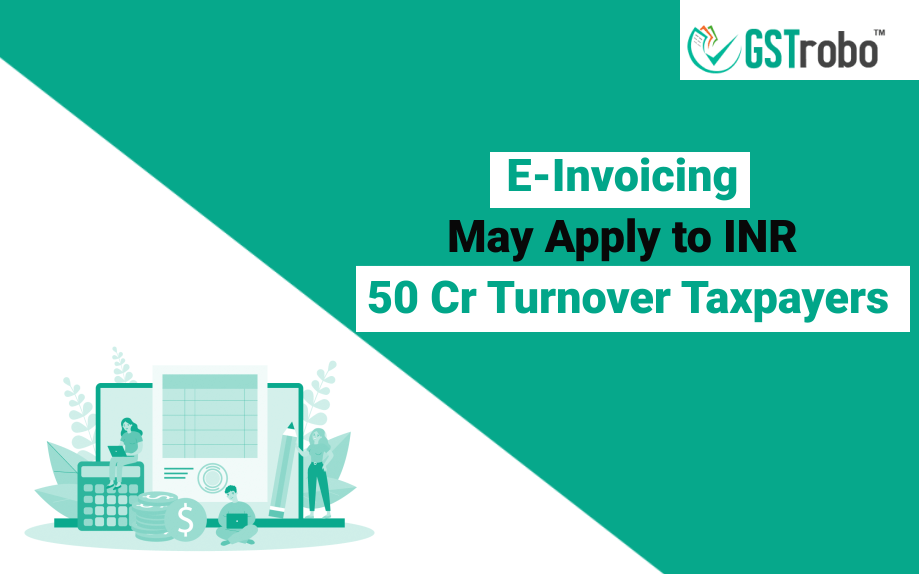E-Invoicing May Apply to INR 50 Cr Turnover Taxpayers
Recently, the invoice registration portal has enabled sandbox testing for all those taxpayers whose turnover is in between INR 50 Crores – INR 100 Crores. So, this means that e-invoicing may soon apply to those taxpayers whose aggregate turnover is INR 50 Crores in any FY from 2017-18 onwards. But it shall be noted that there is as such no official notification about the same.
In case if there you fall in this category of taxpayer you must start preparing for the new change. As, if you do not comply with the provisions of e-invoicing you may get penalized with a maximum of INR 10,000 per invoice. Apart from this, you would not be able to generate an e-way bill and file GST Returns that in turn will hamper the ITC process and ultimately your cash flow will take a nose-dive.

E-invoicing Checklist for INR 50 Crores Turnover taxpayers
Here is the e-invoicing checklist for INR50 Crores turnover taxpayers
- IT Security and Pre-Requisites
E-invoicing requires few IT security guidelines and other prerequisites. These prerequisites should be set up before you can begin producing e-invoicing. If you are intending to hire an ASP or a GSP they will take care of all the essential procedural prerequisites for you.
- Data Correctness
This is one of the vital parts while generating e-invoices. As under e-invoicing, your data should be correct and inter-operable. This data not only flows to IRP but also the GST portal and e-way bill portal. So, be cautious at the time of entering the data in an invoice or you can automate the same by choosing an e-invoicing service provider.
- E-Invoicing Provider
You can pick an e-invoicing provider based on your budget and business requirements, product functionalities, compliance requirements, software support, ERP integration, and pricing. You can read about the things you need to consider at the time of picking an e-invoicing provider here.
- Mandatory and Optional Field Applicability
Your ERP system needs to be configured to incorporate all the mandatory and optional e-invoice fields. Your ERP should validate if every one of these fields of the e-invoice is filled-in, before raising a request with the IRP.
- Document Bifurcation
Bifurcation of documents needs to be done correctly as the current e-invoicing mandate only supports B2B and export invoices. ASP-GSP will definitely help in automating and reduce errors.
- Staying Up-to-date
GST laws keep on amending, and taxpayers need to adjust as and when required. Any change in the e-invoicing may hamper your integration with the IRP and can attract penalties. Here, ASP-GSP will definitely play a major role as they will help you to tackle these challenges to a large extent.
- Training the Staff
Proper training should be given to the staff, in the beginning, to understand the e-invoice generation process and understand e-invoicing standards like reconciliations, QR Codes for B2B and B2C invoices, etc. Timely training is important as it will help you to tackle all the challenges you may face.
- Supports QR Code Functionality
Once an invoice is approved by IRP, it is mandatory for you to add the signed QR code on an e-invoice. In case if you fail to do so, your e-invoice will be null and void and you may need to face the consequences. You can read about the signed QR code here.
